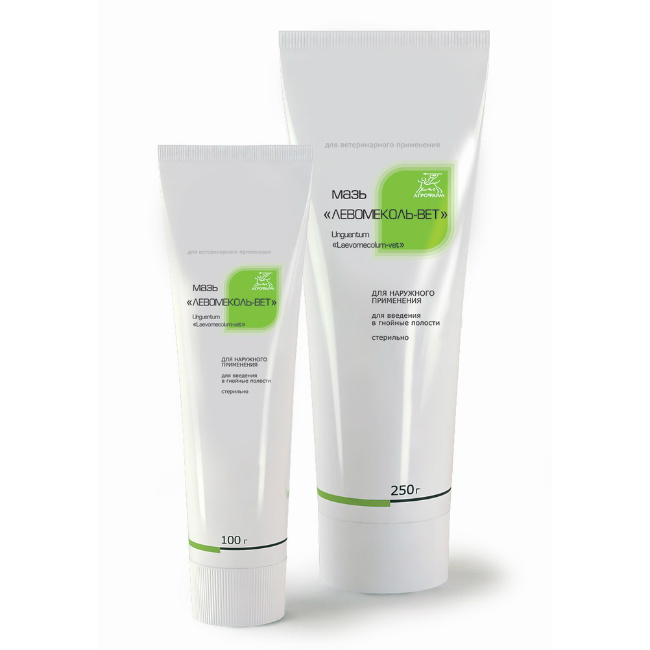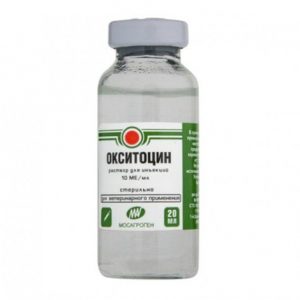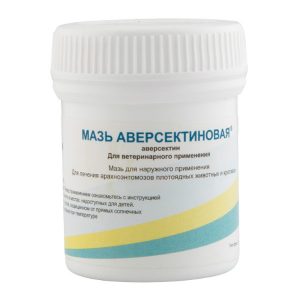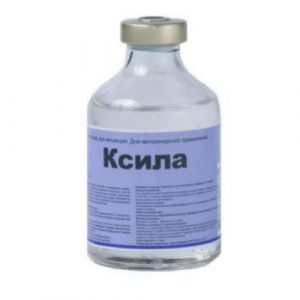Description
Pharmacological action
Ointment Levomekol refers to antibacterial drugs for external use.
Ointment Levomekol has a complex anti-inflammatory, antimicrobial and regenerative effect. The chloramphenicol ointment is active against gram-positive and gram-negative microorganisms, including Staphylococcus spp., Pseudomonas aeruginosa and Escherichia coli. Methyluracil stimulates the metabolic processes in the cells, the healing process, tissue repair, It has an anti-inflammatory effect. Methyluracil enhances local immunity by enhancing the production of white blood cells and interferon. The ointment base polyethylene oxide promotes the deep penetration of the components of the ointment deep into the tissues, without damaging the biological membranes. This allows you to maintain antibacterial activity in the presence of pus.
Ointment Levomekol in terms of its effect on the body refers to low-hazard substances (hazard class 4 according to GOST 12.1.007).
Indications
Assign for the treatment of purulent wounds, infected with mixed microflora (including staphylococci, Pseudomonas aeruginosa and Escherichia coli).
Contraindications
Contraindication to the use of Levomekol ointment is increased individual sensitivity to chloramphenicol and methyluracil.
Special instructions
Levomekol ointment is not recommended for use simultaneously with other topical antibacterial drugs. The use of ointment does not exclude the use of other drugs.
Levomekol ointment is not intended for use by productive animals.
Composition
Ointment Levomekol contains 100 g as active ingredients of chloramphenicol (0.75 g and 4.0 g of methyluracil and 4.0 g of methyluracil) excipients polyethylene oxide 400 and polyethylene oxide 1500.
Dosage and administration
Levomekol ointment is applied topically. Ointment is impregnated with sterile gauze wipes, then applied to the affected surface of the skin and fixed with a bandage. Levomekol ointment is injected into the purulent cavity through a catheter (drainage tube) using a syringe. For such use, the ointment is preheated to 35-40 ° C. Dressings are done daily until the affected skin is completely cleansed. In infectious inflammation of the skin and mucous membranes, Levomekol ointment, after cleansing the affected area, is applied with a thin even layer 1-2 times a day until recovery, both separately and as a complex treatment.
Symptoms of overdose in animals have not been identified.
Features of the action of ointment Levomekol during first use and cancellation not found.
Levomekol ointment is allowed to be used by pregnant animals, lactating and young animals.
Violations of the recommended treatment time for animals should be avoided, as this may lead to reduced effectiveness. If you skip the next treatment with Levomekol ointment, you should resume treatment in the same dose according to the same scheme.
Side effects
Levomekol ointment does not cause animal side effects and complications when used in accordance with this instruction. Very rarely, in animals hypersensitive to chloramphenicol, allergic reactions in the form of skin rashes are possible. In the event of an allergic reaction, the use of the drug is stopped and, if necessary, antihistamines are prescribed.
Storage conditions
Levomekol ointment is stored in the manufacturer s packaging, separately from food and feed, in a dry place protected from direct sunlight at a temperature of 15 ° C to 18 ° C.
Levomekol ointment should be stored out of the reach of children.
active substance
Chloramphenicol, dioksometiltetragidropirimidin
Dosage form
ointment




